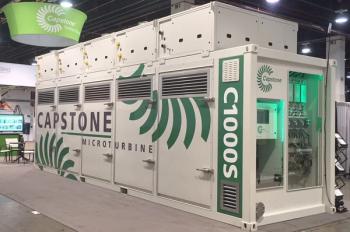
Bearing installation procedure
Installing new bearings is a critical step in maximizing bearing reliability. If the bearings are incorrectly mounted or damaged during installation, life will be shortened. Therefore, use of sound proven techniques is critical.
For small bearings, defined as bearings with outer diameters of 4 inches or less, the bearings can be cold mounted. Above that size, heating the bearings is recommended. When cold mounting, force must be directed against the ring with the interference. Typically this means pressing against the inner ring because the bearing usually is mounted with an interference fit on the shaft.
This article contains excerpts from the paper, "Bearing Maintenance Practices to Ensure Maximum Bearing Life" by Brian P Dahmer of SKF USA.
Force may be applied using an arbor press or an impact sleeve and hammer. No blows should be directed to the bearing itself. Rather, a sleeve should contact the bearing and blows be directed against the end of that sleeve. Use of a dead blow hammer is also suggested.
A sleeve should be used when pressing a bearing onto a shaft or into a housing For hot mounting, care must be taken to not overheat a bearing.
Bearings are limited in maximum temperature by the metallurgy of the rings as well as by use of any non-metallic components such as nylon cages or rubber seals. A good general rule of thumb is to heat bearings to a temperature 150 F greater than shaft temperature. This is sufficiently warm to allow the bearing to slide over the shaft while not hot enough to damage any components. In any case, do not heat open bearings above 250 F.
For bearings that have closures and are greased for life, 210 F is recommended as a maximum temperature so the 150 F difference over shaft temperature may have to be reduced somewhat for greased for life bearings. While ovens, hot plates and oil baths work, the simplest method to heat a bearing is with an induction heater.
The process is quick, accurate, repeatable and safe. Make sure operating instructions and warnings are followed because induction heaters create a strong magnetic field which can be a hazard. When heating bearings, it is critical to use an induction heater that has a demagnetization cycle built in. During the heating process, the bearing is magnetized by the induced current. If that magnetic field is not eliminated, the bearing will attract all ferrous debris in the oil. Usually the heater’s demagnetization cycle operates just before the heater shuts off so the full heating cycle must be completed before the bearing is removed from the heater and installed.
When installing heated bearings, the bearings should be pressed against the shaft shoulder and then the locknut installed and clamped against the bearing. As the bearing cools, it will shrink both radially (creating the interference fit on the shaft) and axially (potentially causing it to pull away from the shoulder). As the bearing cools, the locknut should be further tightened using an impact spanner wrench or, for small bearings, a regular spanner wrench, to keep the bearings tightened against the shoulder.
Once the bearing is cooled, the locknut should be removed, the lockwasher placed against the bearing and the locknut reinstalled against the lockwasher. The locknut should be tightened until it is in intimate contact with the washer and the bearing is tight against the shoulder and then the appropriate lockwasher tab bent down into the locknut slot.
Making sure the bearings are drawn hard against the shoulder is especially important for paired angular contact ball bearings. If the rings are not clamped tightly between the locknut and the shoulder, too much axial clearance may exist. When tightening the locknut with an impact spanner wrench, blows on the spanner will give a dull sound until the rings are in intimate contact. Once all of the components are tightly against each other, blows against the spanner will produce a ringing tone. This tone change indicates things are sufficiently tight.
While torque specifications are published for locknuts, they can be difficult to apply because specific thread tolerances, roughness and lubrication (or lack thereof), will change locknut torque substantially. There is an upper bound for what axial clamping force should be applied to a bearing. This maximum axial clamping force is equal to ¼ of the static capacity (Co) for the bearing. Any greater clamp force may deform the rings changing internal load distribution and contact pressures thereby reducing life.
The correct tools should be used for all of these activities. Attempting to use a drift or piece of bar stock may succeed in tightening the locknut but there is a risk of damaging the nut and/or the bearing. Additionally, small pieces may break off of improvised tools and these pieces could enter the bearing and cause damage during operation. Lastly, a torch should never be used to heat the bearing prior to installation. Such direct heat will permanently damage the heat treatment of the bearing and shorten life.
Newsletter
Power your knowledge with the latest in turbine technology, engineering advances, and energy solutions—subscribe to Turbomachinery International today.





